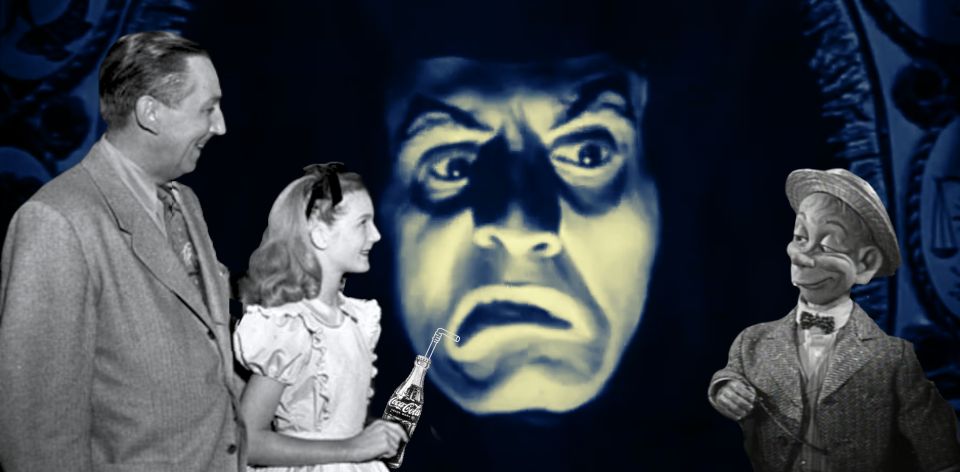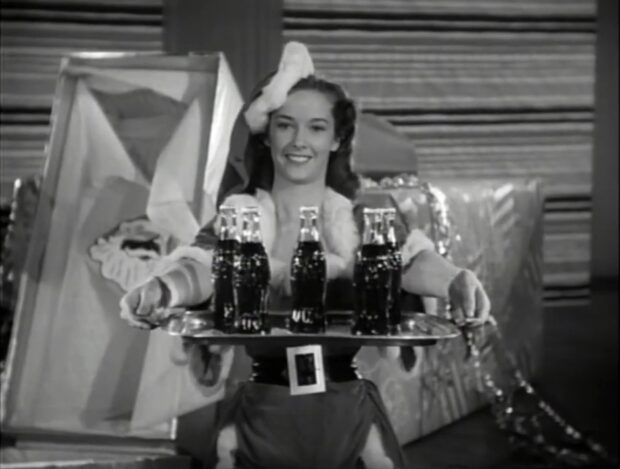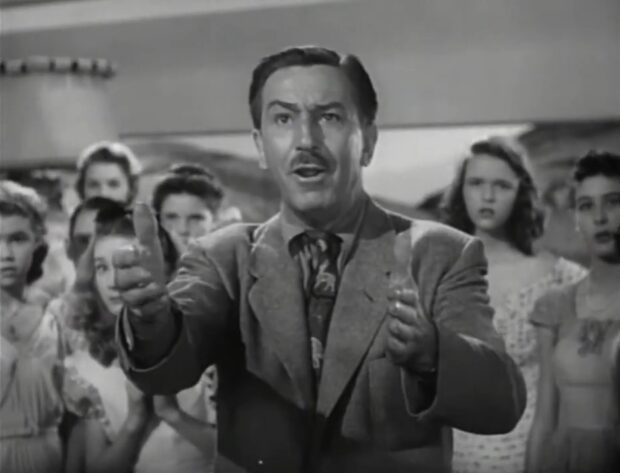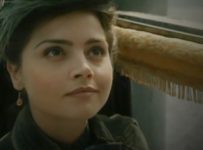Before Disneyland and the Wonderful World of Disney, there was One Hour in Wonderland. Disney’s first foray into television features Alice, puppets and a whole lot of Coke.
For Disney, 1950 was a year of firsts. Emerging from wartime restrictions, Cinderella was the first fairy tales since Snow White and the Seven Dwarfs (1937). “Cinderella saved the day,” as animator Frank Thomas once said. “We had our audience back and were back in the feature business.” Then, with the UK-shot Treasure Island, Disney released their first full live action film. Still, Disney was never one to rest on his laurels.
As 1950 came to a close, Walt Disney took his first steps into this new medium called television. Screened on Christmas Day at NBC, ONE HOUR IN WONDERLAND announces itself as an “hour of wholesome and delightful entertainment.” As the very first Disney TV special, it acts as a promo piece for the (then) upcoming Alice in Wonderland – and a less than subtle plug for Coca-Cola.
Given Walt’s quest for technical perfection in animated and live action cinema, it’s interesting that the opening shot of this special looks so janky. Shot in reverse, to give the illusion that Santa Claus is levitating presents, it’s more sideshow magic than the cinematic kind. All is almost forgiven when Vera Miles emerges from an oversized present carrying a tray of Cokes and dressed as a Santa belle. I’d love to say that this is the weirdest that the show gets, but we haven’t even started on the puppets yet.
Much like Fun and Fancy Free, an animated and live action package film released a few years prior, the framing device is a party with Edgar Bergen and his diabolically unnerving ventriloquist dummies Charlie McCarthy and Mortimer. Seriously, a horny puppet spends much of the running time hitting on a 12-year-old Kathryn Beaumont, the voice and model for Alice. Eww. Just eww.
What does emerge from this is Walt Disney as an entertainer. The world of course knew about Walt, but this was the first time he had been invited into homes to personally emcee the party. Watch as he delightedly summons the magic mirror on the wall, voiced by Hans Conreid, the future voice of Captain Hook. (In fact, as it was already in production, many of the Peter Pan voice cast turn up at this party). Or as he plays with his large toy train, the “result of being a good boy for 30 years.” While not as confident as his later appearances, this is the man who would visit audiences weekly on Disneyland and its offshoots just four years later.
In fact, this is ostensibly the pilot for those anthology shows. The form and function is not dissimilar to a clip show, in that the magic mirror device serves as an excuse to show clips from Snow White and the Seven Dwarfs, Clock Cleaners, Song of the South and Bone Trouble. Keep in mind that this is the first time many of these things would have been shown on television. It was also the first look audiences anywhere had at Alice in Wonderland, with the whole Mad Hatter Tea Party sequence played out in full. On television. Months before release. In your home. That may not seem like much in the Internet age, but it was a big deal in 1950.
There’s lots of other familiar faces as well. The jazz band the Firehouse Five Plus Two is made up of Disney animators, alongside artists from other studios as well. You might recognise Ward Kimball, Frank Thomas, Ed Penner and Harper Groff in the studio, as well as behind their trumpets, pianos, banjos and drums. Bobby Driscoll (So Dear to My Heart, Song of the South and future Peter Pan), Walt’s kids Diane and Sharon, and a slew of voices make cameos as well. (An invisible Donald Duck means Clarence Nash is heard but not seen at the party).
Even while pioneering television, this special still leaves us with a reminder to keep attending your local cinema, see Alice in Wonderland in theatres and, of course, drink Coca-Cola. Capitalism is a strange and contrary beast if it’s anything at all.
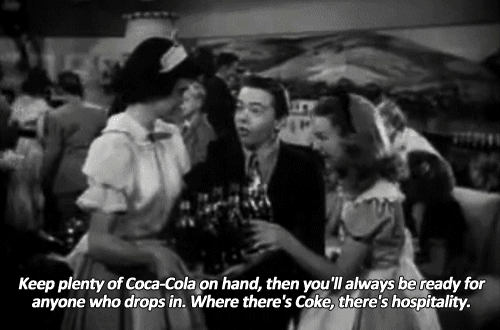
MORE FROM DISNEY MINUS: Newman Laugh-O-Grams | Walt’s first fairy tales | Alice Comedies | Oswald the (Un)lucky Rabbit | Silly Symphonies | The Spirit of 1943 | So Dear to My Heart | One Hour in Wonderland | The early lost films | Johnny Tremain | Westerns of the 1950s | Moon Pilot
All images in this article are owned by Disney unless stated otherwise.

